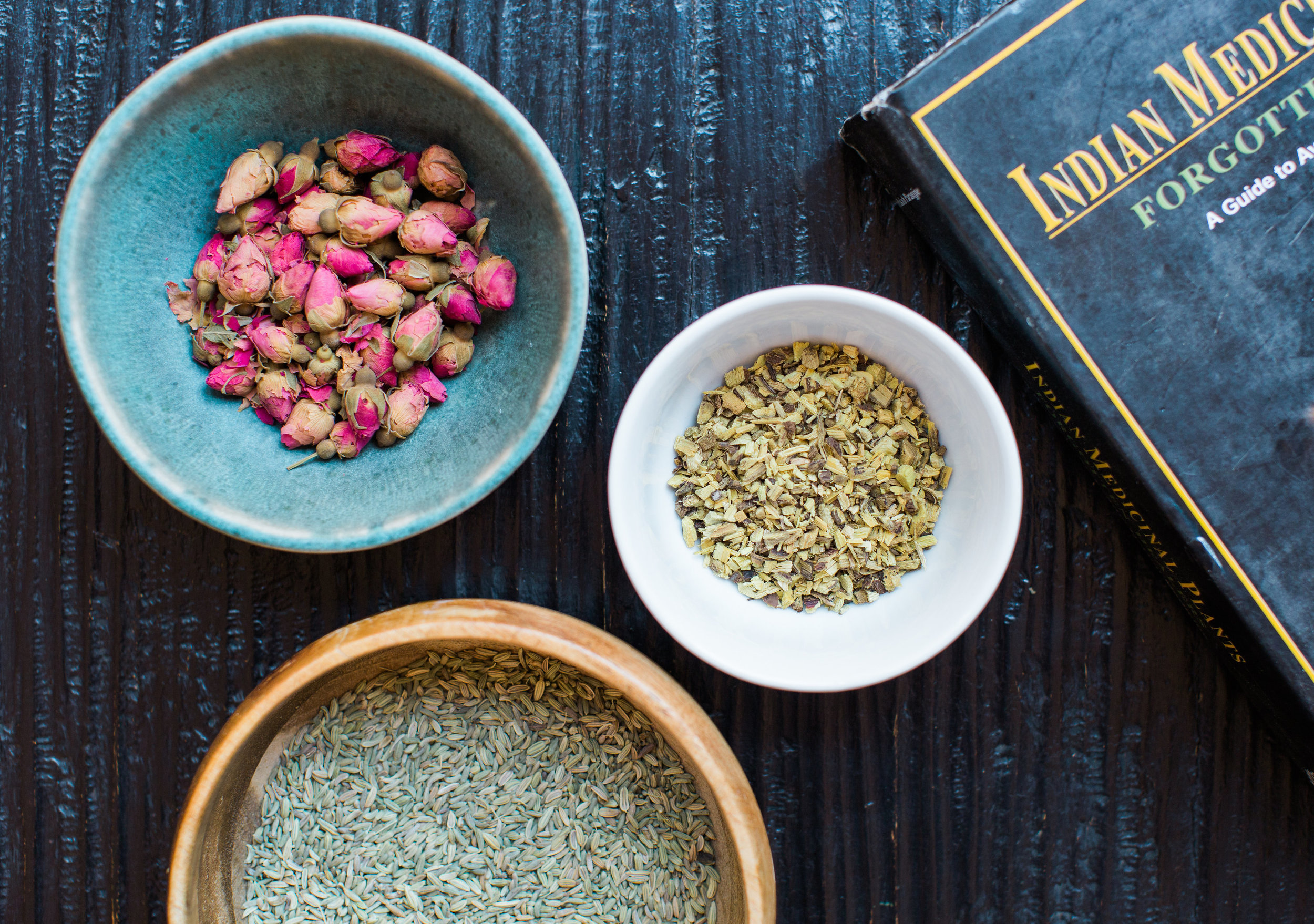Ayurvedic pharmacology is a time-proven system that spans a wide range of gentle yet potent herbal tonics and medicines. Ayurveda pharmacology has demonstrated its effectiveness over the thousands of years it has been in use and continues to do so today. According to Ayurveda, many of the physical and chemical properties of plants that serve as food and herbal treatments are similar to those of the human body.
In Ayurveda, the action of an herb is first considered from the standpoint of its effects on the sensory organs. The qualities of the shape, color, aroma, flavor, and fracture properties of a plant are related to its specific pharmacological actions and provide the basis for the theory behind the energetics of the herbs. The best way to learn about herbs is to become intimately acquainted with them; an herbalist must know a plant’s natural habitat, growing tendencies, climatic preferences, shape, color, taste, smell, and harvest times and, more important, must experience the herb’s effects personally.
“There is nothing in the world which does not have therapeutic utility when applied in appropriate conditions and situations. Drugs act by virtue of their nature and qualities at the proper time, in a given place, in the appropriate conditions and situations; the effect produced is considered to be their action (karma); the factor responsible for the effect is their energy (virya); where they at is the place (adhisthana); when they act is the time (kala); how they act is the mode of action (upaya); what they accomplish is the achievement (phala).” – Caraka Samhita Sutrasthana 26.12,13
Ayurvedic practitioners have developed many excellent herbal preparations. Not all herbs are readily assimilated in their raw state; some need to be processed to enhance absorption. The form in which the herb is taken can significantly affect its potency and effect. The mode of preparation typically depends on the specific causes and symptoms of the disease being treated. There are also specific preparations that are indicated for particular plants. Like medicated ghees, medicated wines, gugguls, and pills retain their potency longer than fresh herbs or powders. An Ayurvedic practitioner can also develop specific custom formulas based upon any imbalances of the doshas. It is best to consult an Ayurvedic practitioner when using these traditional Ayurvedic herbs or formulas.
According to Ayurveda, our bodies are woven from food. The nutrients we ingest are metabolized into the energy and information that form our cells, tissues, and organs. Every day our body needs essential vitamins, minerals, and other nutrients to maintain its delicate balance. Taking Ayurvedic herbs as supplements can be a highly efficient way to create that balance.
Every herb in Ayurvedic herbology has a multitude of benefits for the mind, body, and spirit. Herbs can be used internally or externally (through the skin)—or even used as aromatherapy. These herbs can be useful in a range of applications from weight loss and beautifying skin to supporting overall vitality; Ayurvedic herbs can transform your health in so many ways. Plants and herbs carry in their cells the wisdom of the cosmos and the healing vibrations of nature.
Since ancient times, humans and plants have had a profound spiritual connection—we have evolved with plants and have adapted and learned from them. Also, plants capture solar energy and convert it into nutrients that humans can digest. Plants do this by transforming sunlight into chlorophyll, which can then be assimilated by the human body, along with many other attributes of herbs that, when used correctly, help our bodies maintain homeostasis.
Some Ayurvedic herbs and formulas are safe for daily use and can be our allies in managing our health. Herbs that help balance your constitution complement the positive changes you make in your diet and lifestyle. For example, shatavari, ashwaganda, and vidari kanda are some of the main herbs that help maintain doshic balance by moving excess vata from the body. As the principal herbs used to remove excess pitta, brahmi, bhringraj, neem, and gudduchi also promote balanced health as do bibhitaki, chitrak, and punarnava, the three herbs most commonly used to eliminate excess kapha.
Disclaimer
The sole purpose of these articles is to provide information about the tradition of Ayurveda. This information is not intended for use in the diagnosis, treatment, cure or prevention of any disease.

